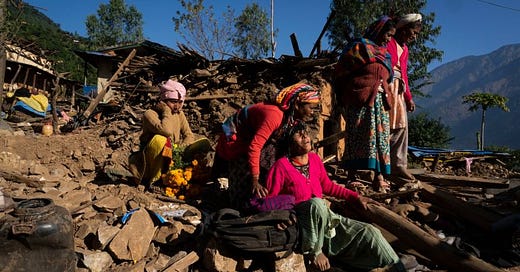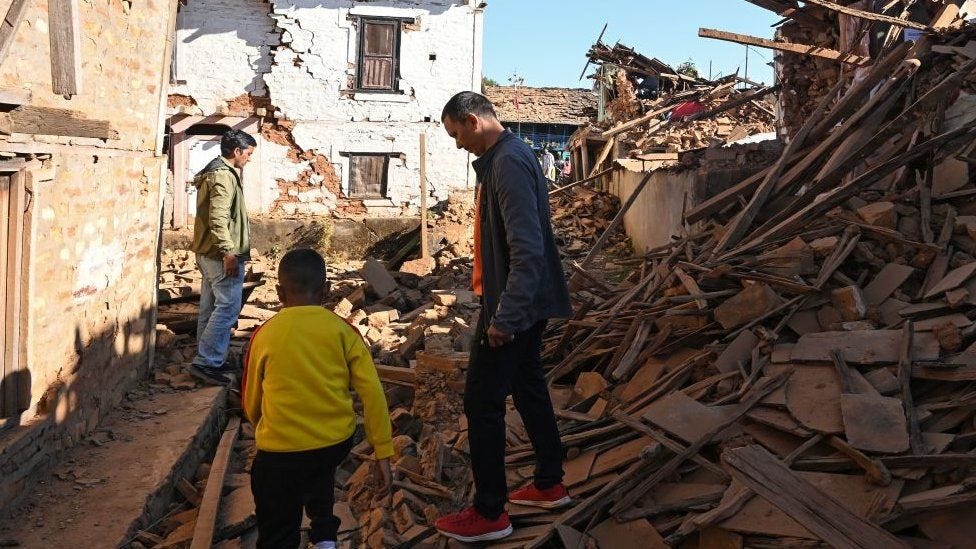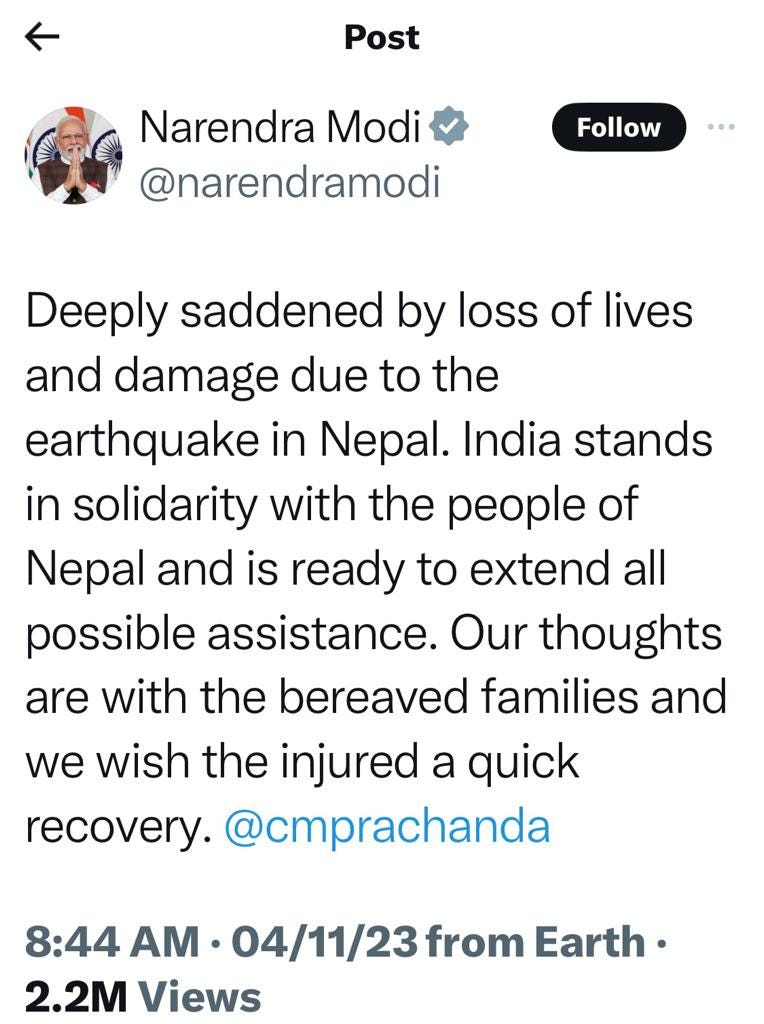Fresh Tremors and Nepal's Unnoticed Earthquake Plight
Tragedy in our Neighbourhood: Over 157 lives lost in the worst earthquake to hit Nepal, since 2015.
Fresh Tremors: Nepal Shaken by Another Earthquake Amidst Recovery Efforts
As Nepal struggles in the aftermath of the catastrophic earthquake on November 3rd that claimed 157 lives, a fresh tremor of magnitude 5.6 struck the Himalayan nation today evening. The earth shook anew, sending ripples of concern through the heart of a country already grappling with the pain of recent loss and destruction. Details of additional casualties and damage are still emerging as the nation holds its breath.
This recent seismic event marks the third earthquake to jolt Nepal within a span of just four days, a testament to the country's vulnerability seated atop the tectonic battleground of the Himalayas. Parts of northern India, including the Delhi-NCR region, also felt the tremors, a reminder of the geological ties that bind the region in shared risk and solidarity.
Responding to Repeated Ravages
The Nepalese people, still reeling from the shock and grief of the earlier quake, are now faced with renewed fears and the daunting prospect of continuing their recovery amidst the threat of further seismic instability. Rescue and relief efforts, which had been mobilizing in response to the November 3rd tragedy, must now reassess and adapt to the evolving emergency, with the international community watching and preparing to lend support.
As we wait for more information, this development underlines the urgent need for comprehensive disaster management and international cooperation. The tremors felt in India underscore the imperative for regional solidarity and the need for a robust framework to address the challenges posed by such natural calamities.
A Catastrophe Overshadowed
As the world grapples with geopolitical tensions and calamities, the recent earthquake in Nepal, claiming at least 157 lives and shattering homes, struggles to garner significant media attention, particularly in Indian and Western spheres. This disaster, severe in its own right, seems dwarfed by memories of the 2015 earthquakes that devastated Nepal with a staggering death toll of 9,000. It prompts a profound question—why do some human tragedies fade into the background, and others capture the world’s collective gaze?
The Silent Sorrow of Nepal
On a fateful Friday night, the earth beneath Nepal quivered with a destructive force, leaving behind a trail of sorrow. The 5.6-magnitude quake, emanating from a depth considered shallow by geological standards, primarily struck the districts of Jajarkot and Rukum West. With a death toll of 157 and rising, hundreds are injured, and the infrastructure is in ruins. These numbers, as tragic as they are, seem to whisper rather than thunder in the global consciousness.

A Question of Visibility
One cannot help but ponder why such a calamity has escaped the broader media's scrutiny. Could it be 'disaster fatigue', a numbing of our collective senses to sorrow that is not on a grand enough scale? Or is it that the Himalayan nation, despite its beauty and the resilience of its people, has not been considered newsworthy enough unless the tragedy is of an unfathomable magnitude?
An Appeal for Attention and Aid
It is imperative that the international community, with India taking a proactive role, steps forward not only to provide immediate aid but also to amplify the plight of Nepal in these trying times. India's kinship with Nepal extends beyond mere geography—it is bound by culture, history, and mutual support in times of need. Indian Prime Minister Narendra Modi's pledge of assistance is a commendable step, but it is the sustained attention and empathy that will carry Nepal through its long journey of recovery.
Conclusion: Beyond the Numbers
As the search and rescue operations persevere amidst the challenges of terrain and disrupted communications, it becomes crucial for India, and indeed the world, to demonstrate solidarity with Nepal. The seismic tremors may have ceased, but the echoes of this disaster should not. It is not merely a matter of numbers when lives are lost and communities shattered. International aid, empathy, and attention must transcend the barriers of media coverage frequency and intensity, ensuring that even the silent sorrows are heard and tended to. India, with its shared bonds with Nepal, should indeed be at the forefront of this humanitarian response.







